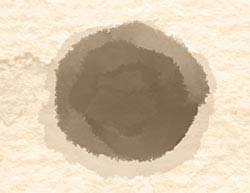Chicago
I have been troubled by zoos and art for art’s sake. I just found out what my trouble has been. They are not fair. They are not legitimate. I can explain. I want clean food. I want exercise that makes sense. I want to read only good writing. I wish to be healthy. I have felt that society, all societies, are not fair. They ought to promote health and a sense of well-being, but they promote disease and discomfort. There are artificial—no, worse—synthetic and counterproductive, machines, entertainments, foods, and habits. My society does not think clearly. My society provides and promotes activities of frighteningly destructive force.
Animals are beings equal to humans. Animals are tortured in zoos. They deserve to be natural; to live in their assigned places. They ought not to be trapped, confined, and limited by us. Our excuse for treating them badly is that we wish to see them and get to know them better. This is not fair. It is not valid. It is hypocrisy, because the way to see them and know them is to observe them in their proper habitats. The way to preserve them is to give them their environment and protect them against capture and murder. The way to appreciate them is to release them from all zoos. And the way to make art is not to make it at all.
Art ought to be art for the sake of living. Folk art is art for life’s sake. Some art is made for Heaven’s sake. It is a dedication to deities. That is art for living, too. Beautiful utensils, tools, and toys are made for the sake of utility; and they may be artful. Primitive art is called that because the maker did not mean to make art. He did not study the art of “art.” The maker merely made a chair with charms and usefulness, too. The shakers put their hands to “work.” They made graceful, strong, efficient buildings, furniture, tools, and conveyances. When any of these are displayed, it pleases the eye, the spirit, and the mind. This is the pleasure that art gives. A painting painted to express a feeling, a memory, or just an urge can turn out to be art. It is not meant to be hung or displayed, though it may be.
Quite a large number of languages have no word for art. A thing is just itself, for its use, though it may be so beautiful, odd, or surprising that we call it “art.” Of course this is not a new thought. Duchamps tried to blow away the idea that only certain special things are art by proposing that as ordinary a thing as a urinal or a bicycle wheel is artful, too. He’s right.
Some people, especially in our time, have come to regard certain beautiful things as belonging in museums. They use the term “of museum quality” for photographs printed on acid free paper or for furniture that is old but free of damage. Museum quality? My, my, has art come down to this: to be for the sake of display in a museum? Ironically, though I deplore warfare for any reason, I’d have to say that I regard weapons that are finely wrought and beautiful as art. They are not intended as art in our modern sense, but as tools of destruction; yet they can be artful. To me, they are more legitimately art for their own sake than almost all other art which has been made for its own, “art’s sake.”
Both zoos and art museums separate life—animal life, life work, human enterprise—from the world. A museum is in the world, but visited by a small portion of its population. A zoo is seen by relatively few citizens in any country. The art is being preserved, we are to believe, as are the animals. The animals are being tortured. The art is too isolated to be of much pleasure to many people. But I suppose that conceptual art means to give itself meaning beyond its mere appearance. It conveys ideas. The artists who make it wish to have their art be meaningful in our lives, in society. They understand that art merely for its own sake is not enough for them, at least. And some of them tell us that they never mean to say that their art is more artful than unintentional art; it’s just theirs. No zoo, however, or aquarium, or “Sea World” will admit that it is illegitimate. Their controllers defend unkind practices. They defend their artificiality. They claim that they are naturalists, in the most unnatural settings imagi
